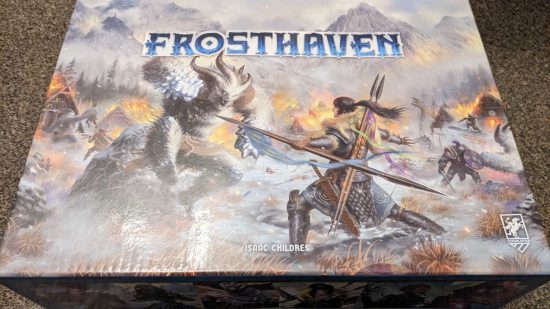There’s no doubt board game designer Isaac Childres is proud of Gloomhaven, a title that spent five years at the top of BoardGameGeek’s rankings. However, in a recent Wargamer interview, he says his follow-up, Frosthaven, is even better – a big statement given Gloomhaven’s status as one of the best board games on the market. “I think the general response is like, ‘Gloomhaven was already great, but they’ve improved it in every way’”, he says. According to Childres, this is down to three core lessons: balance, approachability, and cultural sensitivity.
When it came to balancing Frosthaven, Childres says the key was something that perhaps seems obvious: playtesting. “We did a lot more playtesting”, he tells Wargamer. “We had a very dedicated group of playtesters who wanted to see the game come out and have everything feel balanced.” “We spent a lot of time going through every single scenario, playing each character over and over and over to make sure there was a good level of choices”, he adds.
When it comes to how this has shaped the game, the first place Childres’ mind goes is levelling for the various Gloomhaven classes. “I think a lot of times in Gloomhaven, you level up and one ability is obviously better than the other”, he says. “It limits your ability to branch off into different builds.” “Now we’ve made sure there are at least two really viable builds for each character, so people could specialise and meld between those two if they wanted”, he tells Wargamer.
“We also wanted to improve the approachability of the overall experience”, Childres adds. “We did a whole overhaul on the graphic design. This means we went to a more icon-based system rather than just words, which I think took a little bit of getting used to initially, but I think it allows for a better flow of information overall.” “It also allowed us to put more stuff on the cards, which was important for some of the more advanced classes like the BlinkBlade”, he says.
Childres also lists practical tools like storage inserts and scenario flowcharts, saying they help keep track of the game’s sprawling story – and trim down at least some of Frosthaven’s mammoth setup time. “That still takes a long time”, he admits, “but you’ve got to make concessions where you can”.
Then Childres comes to the topic of cultural sensitivity, which he calls “one of the big lessons I learned from Gloomhaven”. “I went into making Gloomhaven with the idea that it’s completely separate from the real world”, he says. “I can write whatever I want, and nobody’s gonna care – it’s not gonna affect anybody.”
“But then I learned there are inevitably parallels between what you write and real-world biases”, Childres tells Wargamer. “The way these inform how you write means you can write in ways that can negatively impact people, because you’re reinforcing these negative stereotypes – real-world stereotypes that have been used to subjugate and oppress people for centuries.”
Childres explains other professional writers were brought in to work on his story outlines. “I think we’ve improved on the narrative of Gloomhaven, including the cultural sensitivity of the narrative”, he says. “Bringing in a cultural consultant wasn’t just about fixing mistakes; it was actually about improving the narrative, making these cultures feel richer and more fleshed-out instead of just leaning on tropes.” “I think it really helps strengthen Frosthaven”, he says.
If you’ve not tried Childres’ mega-successful debut game, do check out our Gloomhaven board game review for a deeper delve into what made the original tick. If you’re a fan, you may also be interested in Childres’ opinions on AI art in games.
Source: Wargamer




